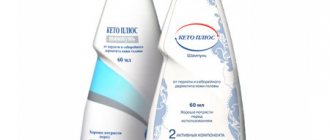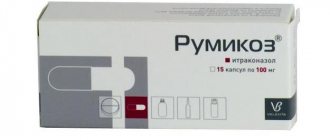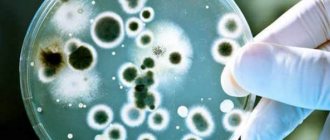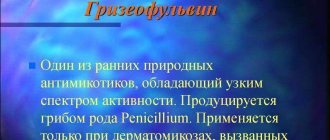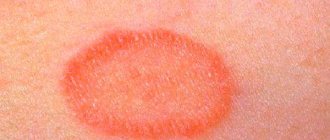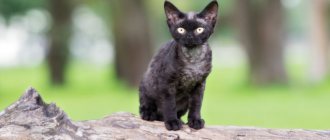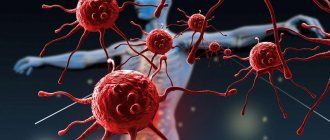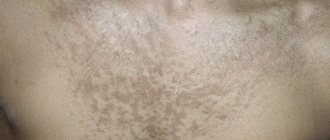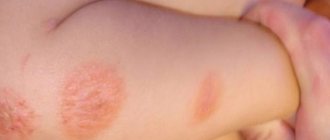Ringworm is considered one of the most common skin diseases. Its appearance is provoked by completely different factors. But the source is always a virus or infection. Infection occurs not only from humans. The main transmitter of the disease is the animal. What is lichen, what routes of transmission of infection exist and methods of prevention will be discussed in the article.
What is lichen
Ringworm is a whole group of skin diseases that do not depend on etiology. It manifests itself in the form of spots, scaly rashes, papules.
Among its main varieties there are: colored, pink, pityriasis, asbestos and others. Almost all of them are accompanied by very severe itching. Lichen is not characterized by a specific localization; its signs appear on different parts of the body.
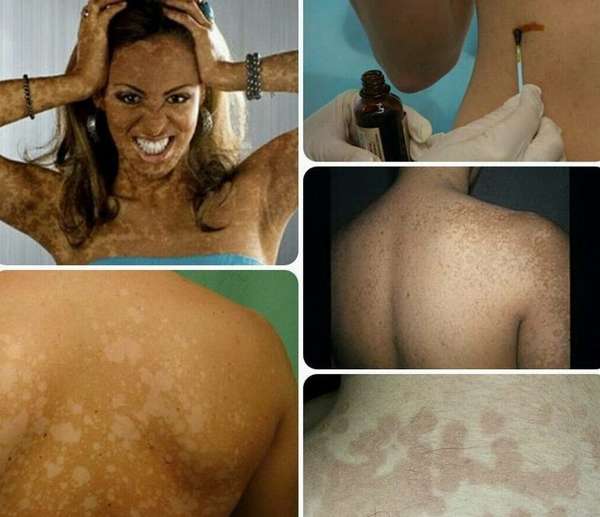
Etiological factors
Quite often, traces of lichen fungus are found on human skin, which does not cause the development of a pathological process. Activation and progressive growth of fungal cells occurs due to:
- immunodeficiency state,
- sweating (hyperhidrosis) of the skin,
- associated diseases: endocrine diseases, diabetes mellitus, vegetative neurosis, obesity,
- neuropsychological exhaustion,
- respiratory and gastrointestinal diseases,
- excessive sunbathing,
- frequent external use of antibacterial drugs, detergents,
- frequent exposure to ultraviolet lamps.
The fungus also affects the skin if a woman has hormonal imbalances, diseased ovaries or adrenal glands. It may be caused by pregnancy or menopause.
Etiological factors provoke the onset of the disease, which is the reason for urgent treatment. It is difficult during the hot period, since high temperature activates a fungal infection, which leads to rapid growth and spread of lichen manifestations throughout the skin.
Middle-aged people are predisposed to infection with the fungus. Children under seven years of age get sick very rarely, only when they are affected by the disease and have a weak immune system.
Can I go to work or school with ringworm?
The presence of this diagnosis requires isolation of the patient from the team for at least two weeks. In schools and other children's institutions, it is mandatory to notify parents for timely detection of the disease in other children.
The disappearance of ringworm symptoms and 3 negative tests for the presence of fungus are a reason to return to school or work.
If a dermatomycosis infection has been detected in a team, then to prevent pathology, you can use antifungal shampoos for some time, carry out wet cleaning with the addition of antiseptic solutions, and strictly observe personal hygiene.
- Treatment of lichen in Kharkov;
- treatment of lichen in Uzhgorod;
- treatment of deprivation in Sumy;
- treatment of lichen in Poltava;
- treatment of lichen in Odessa;
- treatment of deprivation in Nikolaev;
- treatment of lichen in Mariupol;
- treatment of deprivation in the Dnieper.
How is pityriasis versicolor transmitted?
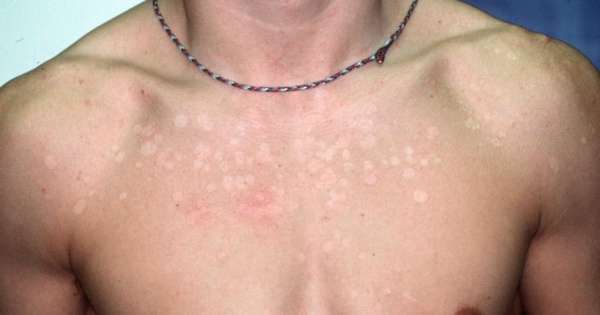
Tinea versicolor (the second name for the fungus) occurs as a result of an internal imbalance in the human body, judging by which it is claimed that it is not contagious. But, according to some experts, there are cases when pityriasis versicolor is transmitted from a sick person to a healthy one.
This mycotic lesion is considered a conditionally contagious disease, since as a result of infection, its symptoms do not appear in every carrier. Infection with many types of fungus is observed in almost half of the world's population, but its progressive development is observed only in people with weakened immunity and in patients with certain chronic diseases.
Pityriasis versicolor infection occurs as a result of:
- personal contact. Usually this disease is considered familial,
- use of patient items (towels, washcloths, clothes) by other persons,
- use of fitting rooms in stores and public changing rooms.
The incubation period for lichen lasts two weeks. And in some cases it reaches several months. For a long period, signs of dermatomycosis may not appear. But when a number of factors arise that provoke the fungus, it multiplies, which causes the development of pityriasis versicolor.
Length of incubation period
The incubation period of lichen is the moment during which the fungus begins to multiply in the body. It can be completely asymptomatic and take from 5 days to several months. Everything will depend on the type of pathogen.
Ringworm
A highly contagious disease caused by fungi such as trichophyton, microsporum, and epidermophyton. After contact with an infected person or his belongings, it may take 2-6 weeks for the first symptoms to appear. When infected from animals, the disease begins to progress within 5-14 days.
Infection may not occur after exposure. If a person has good immunity, then the fungus will be destroyed even before it penetrates deep into the skin. Ringworm begins to progress in the presence of the following factors favorable to it:
- multiple minor damage to the dermis;
- increased sweating;
- chronic diseases.
The fungus infects the hair follicle and feeds on keratin, preventing hair from developing and growing normally, forming a dense dome in the follicular sac. Subsequently, hairs break off. There are flaky bald patches on the head.
Spots appear on smooth skin, clearly delimited from healthy areas by a red rim consisting of small bubbles with clear liquid.
girdling
A viral disease caused by varicella zoster. After contact with an infected person, chickenpox begins to progress in a healthy person. The rash looks like reddish blisters that rise above the surface of the dermis. It affects the whole body. Sometimes internal organs.
After chickenpox, a person develops a stable immunity, but with secondary contact or a significant decrease in immunity, it manifests itself as shingles. The rashes are located on the skin parallel to the nerve endings. The rash is localized on one side of the body.
In addition to rashes, the disease is accompanied by fever, chills, and intoxication. The affected areas of the skin hurt when touched. The sensation is almost not relieved by painkillers. The incubation period takes from 7 to 21 days.
Pityriasis
The fungal disease is chronic. It is identified in adolescents and people living in hot countries. Increased sweating is a favorable soil for the growth of fungus.
The rash is red-brown, clearly limited. Sometimes they merge into a single focus. The rash is localized in the area of the upper limbs.
The fungus disrupts the production of melanin, which causes hyperpigmentation. The disease is accompanied by slight itching and peeling.
The incubation period lasts from 14 days to 3 months. The main factors for the development of the disease are incorrect selection of clothing and shoes, disruption of the endocrine system, gastrointestinal tract, central nervous system, long-term therapy with hormonal drugs and antibiotics.
Pityriasis versicolor is not transmitted contagiously. After completion of treatment, patients must adhere to certain rules of behavior and undergo prophylaxis with immunomodulators to avoid frequent relapses.
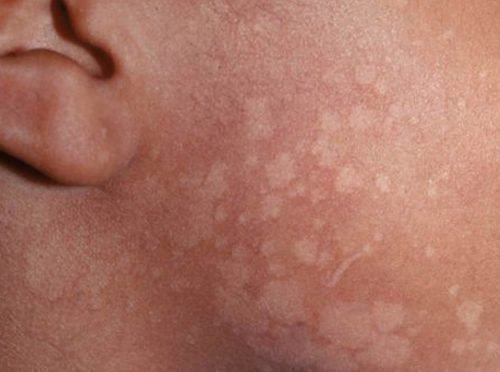
Pityriasis versicolor is a chronic disease
Red flat
Affects the dermis and mucous membranes. Belongs to the group of acute inflammatory diseases. The rash is localized in the oral cavity, on the bends of the limbs, in the groin area, on the smooth skin of the legs. Lichen planus never affects the head and face area. It is not transmitted through contact with a sick person.
The causes of the manifestation are allergies, decreased immunity, heredity, and autoimmune disorders. Identified mainly among the female part of the population.
Let's look at the signs of lichen planus in more detail.
- Monomorphic shiny rash.
- Papules form on the skin, covered with flakes of dead skin.
- Fever, severe itching.
- Damage to the mucous membranes causes burning, pain, and loss of appetite.
The spots are rings that, when fused, form arched islands. Papules located in the folds of the skin transform into weeping, erosive areas. After resolution, a hard crust of pus appears on the surface of the papules.
For the most part, lichen planus is a chronic disease. Complex methods are selected for treatment based on etiological factors. After healing at the site of the lesions, the skin remains lighter. When the mucous membranes are affected, the disease becomes more complicated and requires longer treatment.
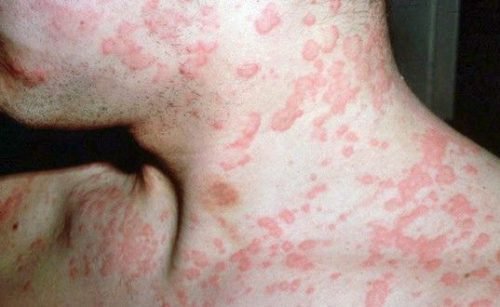
Lichen planus is not transmitted by contact with a sick person
Pink
Infectious-allergic disease. It mainly affects the population aged 10 to 35 years. Incubation takes 6-21 days. Appears as a complication after the flu.
Oval pink spots more than 2 cm in diameter appear on the skin. Active peeling begins in their central part. After some time, many similar rashes appear on the body. A rash of varying degrees of maturity is noted. Manifestations are more pronounced in children. They develop a rash not only on the body, but also in the face and neck.
Treatment is prescribed only in complicated cases when a secondary infection occurs. Basically, the disease goes away on its own within 4-6 weeks.
For severe itching, topical antihistamines and corticosteroids are indicated. To alleviate the condition, folk remedies are used.
Imbricate mycosis
Caused by the parasitic fungus Trichophyton. It is transmitted through contact with the patient and his personal objects. Identified in the male half of the population who are overweight, have disorders of the endocrine system, and do not take care of hygiene.
Brown spots surrounded by a hyperpigmented border are observed on the surface of the dermis. After some time, the papules increase in size, and active peeling is observed in the center. After 4 weeks, a similar spot forms in the center of the spot. The process is constantly repeated, as a result of which one purulent crust is layered on top of the previous one. The rash looks like shingles.
The rash appears mostly on the legs, arms, and body. Very rarely it can affect the nail plates and hairy areas. The incubation period after contact with an infected person is 1-2 weeks. Treatment is complex and lengthy. Keratolytic ointments and fungicidal preparations are indicated. If not treated in time, the disease will become chronic.
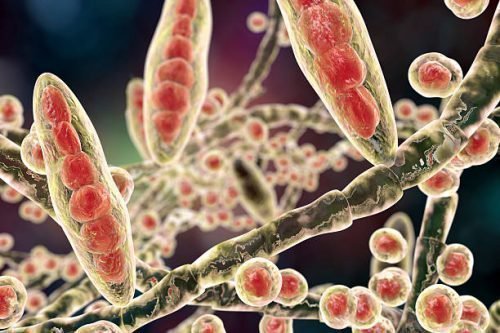
Trichophyton incubation period is 1-2 weeks
Ways of infection with ringworm
The appearance of ringworm is caused by the fungi Trichophyton, which affects only human skin, and Microsporum, which are dangerous for both humans and animals. Children aged 4 to 13 years are most susceptible to infection. The main route of infection with Trichophyton microbes is both direct contact of a patient with a healthy person, and indirect contact through the use of clothing of a carrier of the disease, household items (towels, combs, bed linen, hats). Ringworm infection occurs when unsanitized tools are used for cutting and shaving. The defeat of a healthy person from a sick person by Microsporum microbes occurs in the same way as Trichophyton. They can also get on human skin as a result of direct contact with a sick animal (horse, cattle, fox, mouse and others).
The impetus for the development of the disease is not only the transfer of the causative agent of infectious mycosis, but also the presence of etiological factors in the form of:
- traumatic damage to the integrity of the skin,
- maceration of the skin,
- low immunity.
If there are no predisposing factors, the fungal infection does not provoke the disease, since it is destroyed by immune cells. It is possible to remove microbes from the entire skin (without damage) by rinsing during a hygiene procedure.
Ointments against lichen
Many types of ointments have been developed for the treatment of microsporia and human trichophytosis.
They differ in composition, method of action on the parasite and healing rate. The ointment is thicker than other drugs. It lasts longer on the treated area, penetrates into the deeper layers of the skin, and therefore fights mycosis better.
https://www.youtube.com/watch?v=GEb79kpsUVk
An alcohol solution of iodine is used in combination with ointment. It has a detrimental effect on fungi and bacteria, disinfects the affected area of the skin:
- Iodine is used in the morning, ointment at night.
- 20% sulfur ointment. The sulfur contained in the preparation dries out the ulcers. Kills the causative agent of lichen and accumulated bacteria.
- Salicylic. Reduces inflammation, kills parasitic mycoses. The surface treated with ointment must be covered with a napkin. It is strictly forbidden to treat wounds on the face.
- Sulfur-tar. Kills the pathogen and disinfects the surface. The product is used to treat the affected area and adjacent tissues. If the focus of inflammation is strong, then apply a bandage.
- Lamisil. Inhibits the reproduction of the parasite and kills it.
- Mikospor. Destroys microsporid cells. The drug is applied to the wound in a thin layer.
How do you get infected with pityriasis rosea?
Of the huge number of similar fungal infections, pityriasis rosea has the least ability to damage the skin. Low immunity is the most common cause of the disease. Although it is contagious, transmission does not always occur from a sick person to a healthy person, even if they are constantly in the same room and in constant contact. There are ways of infection:
- in direct contact with a carrier of infection: a regular kiss, handshake, touch,
- when using the patient’s personal items: combs, towels, bed linen,
- when touching household objects that the patient also touched: door handles, handrails of public transport.
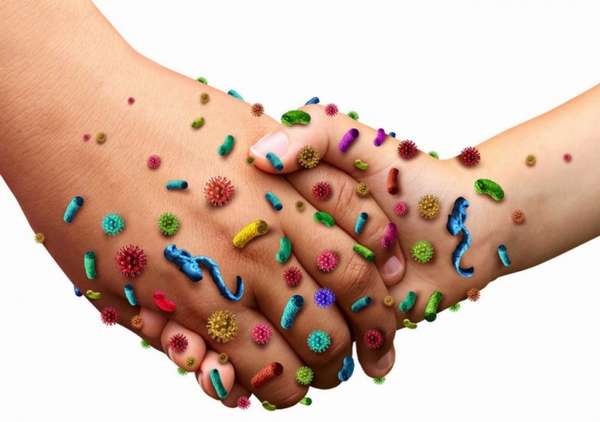
If a person has a weakened immune system, infection can occur simply by touching such objects.
The infection may be autoimmune in nature. Having suffered the disease, a person remains a virus carrier. The occurrence of certain factors (colds, stressful situations, decreased immunity) favors a person becoming infected from himself.
How to treat ringworm in humans
Although ringworm is not dangerous, it is a highly contagious disease. For this reason, doctors recommend hospitalization of the patient. However, even if treatment is carried out at home, it must still be comprehensive.
Medical procedures
Quite effective methods against ringworm are physiotherapy: microwave therapy, UHF, ultraviolet irradiation, electrophoresis, phonophoresis. For severe pain, reflexology and novocaine blockades are used.
Treatment with pharmaceuticals
Standard treatment of lichen with medication involves taking the following medications:
- Antifungal creams and ointments. Typically, salicylic and tar ointments are used, as well as drugs containing azales (Isoconazole, Ketokenazole) or terbinafine (Lamisil).
- Antifungal drugs in tablet form: Griseofulvin, Orungal.
- Solutions for the treatment of lichen on hairy areas: Nitrofungin, Vokadin, Yodicirin.
- In some cases, your doctor may prescribe hormonal medications or antibiotics.
Treatment with folk remedies for ringworm in humans
Traditional medicine can also help get rid of ringworm, but you should remember that any “amateur activity” can cause complications, so you should first consult a doctor.
Apple vinegar
- Soak a gauze pad in undiluted vinegar.
- Apply to the affected area for 10 minutes.
- Repeat 6 times a day.
Celandine juice
- Squeeze juice from celandine.
- Mix in equal proportions with melted butter.
- Rub into the sore area several times a day.
Chamomile decoction
- Add 1 tbsp to a glass of just boiled water. l. dried flowers, mix.
- Leave for 40 minutes.
- Rub into scalp.
- After an hour, rinse with warm water.
Prevention of shingles infection
Taking preventive measures will help prevent the spread of fungal infection. A person will not become infected if he follows the following rules and preventive measures:
- compliance with personal hygiene rules,
- exclusion from one’s everyday life of other people’s personal items,
- limiting contact with sick and unfamiliar animals,
- washing hands with antibacterial soap after returning home from the street and other public places,
- limiting the use of clothing and shoes made of synthetic material, which cause increased sweating,
- increasing immunity, eliminating bad habits, creating a diet, consuming vitamins and healthy foods containing minerals, and exercising.
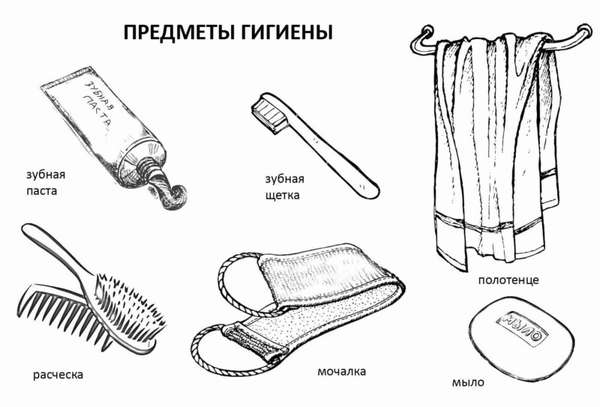
Timely detection of cases of infection and isolation of patients is a systemic prevention of lichen, during which health workers monitor the condition of people’s skin (especially in children’s institutions).
It is necessary to carefully monitor the condition of the skin. If the first symptoms of lichen suddenly appear, you should immediately make an appointment with a doctor. With a positive diagnosis at the initial stage, this will help to quickly cope with the disease.
Prevention
Prevention of the disease involves a set of measures aimed at increasing the immune defense of the human body while strictly observing sanitary and hygienic standards in everyday life and in public places. Explanatory work with the population is also needed, describing the characteristic signs and dangers of this type of disease in order to detect it in a timely manner. Immediate isolation of the infected person or animal is necessary for the duration of treatment, followed by mandatory examination of everyone who might have contact with them.
Clothing and the room in which the patient is located must be thoroughly and regularly disinfected. Do not forget about the long incubation period and the high degree of contagiousness of this disease, and at the slightest suspicion of its presence, immediately consult a doctor. Do not self-medicate under any circumstances.
If sick animals are found in the house, it is necessary to immediately notify the veterinarian and then strictly follow his recommendations. It is always important to remember that disease is easier to prevent than to treat.
